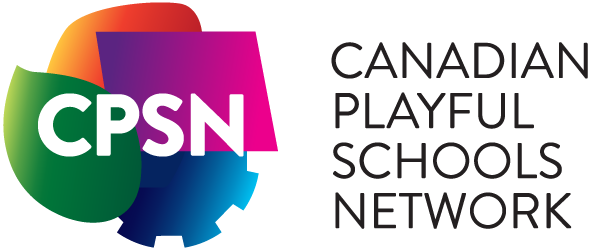**Article originally published in French.**
Fun activities are everywhere, all the time!
Bordered by the forest, Pomquet’s Acadian school aims to facilitate and promote outdoor learning. For 2022-2023, the main objective is to develop pleasant spaces for sharing knowledge and experience. The school team and students are also keen to support biodiversity in the surrounding area, to prevent climate change and preserve the species already present, notably by creating a pond or planting trees.
Christian Demers has worked at Pomquet Acadian School for 25 years, teaching physical education, personal and social development, new technologies and citizenship. In this interview, he tells us how an alternative, playful approach to teaching helps to forge links between young people and the community.
Tell us about the fun things your students are up to at the moment?
In fact, our play project is ongoing, so there’s always something going on! Yesterday, we went to the forest to install the birdhouses the students had built. This morning, others finished making the sets for the 6th grade play. In fact, we’ll be reusing the wood scraps to fuel the cooking club’s fires.

What effects do you observe on your students?
Above all, I see commitment because the students choose the tasks they want to do. They also develop great maturity and responsibility.
How are these activities organized?
The planning of these activities is very spontaneous, sometimes done in the corridors, sul’fly! Our focus is on action. Yesterday, a colleague told me that she had received funding for a beadwork activity to work on traditional Aboriginal culture as part of her French course. When she told me this, I contacted the headmistress of Whycocomagh School to make contact. By the end of the day, everything had been confirmed: we’ll be helping to finance the materials, the school will be contributing its know-how, and together, the two 9th grade classes will be taking part in the beading workshop.
Some might ask: “But when do your students work?
Over the years, the 9e have become leaders. They learn how to be and how to live, they spend a lot of time teaching the younger children, they create a legacy, and that’s why every year we have a bigger project than the others, for example the 9th graders built a bridge. One of the learning outcomes of bridge building is to study the structure of the bridge; many other schools use these outcomes to make popsicle-stick bridges… We’re building a bridge that follows the building codes, so we can take a whole class over it! So in the end they learn a lot more, and they’ll be able to build other things at home.
Do you think play activities can change students’ relationship with French or the French-speaking community?
Yes, because we’re in situations where we’re having fun in French, and we’re avoiding French becoming a working language. Obviously, I do a lot of language reminders, but we end up in situations where the students have to communicate to be able to work together. And each activity has its own specific vocabulary.
Do you think that this social life at school, where there’s a lot of cooperation, influences the relationship between students and adults?
Yes, and that’s crucial, it’s built up over the years. Between grades 6 and 9, you really have to develop maturity because I’m putting tools in your hands… So there’s mutual trust and respect, between the students through the projects, but also with us. We send students with knives and axes into the woods to build fires, and we’ve got nothing to worry about! (laughs) But we understand that it’s a culture that’s been established, they’ve grown up with it… they’ve been around fires since kindergarten, they’ve been taught and certified to use the tools, they understand the dangers, they know there’s no folly to be done!

Outside the curriculum, how do you address and integrate Aboriginal perspectives into students’ learning and experiences?
The key is Netukulimk, is a Mi’kmaw word meaning “respect, responsibility, reciprocity and connection with others”. These are values that tie in with my civics course, respect for oneself, for others, but also for the environment. Every living thing has an equal right to be on this planet, and we have a responsibility to ensure that this is respected. And all this, because we live it at school, has brought us closer to aboriginal culture. We also work to be allies, so we often cooperate with aboriginal schools and community members on our students’ activities and projects.


Alison Cattani-Nardelli is a graduate of the University of Ottawa, where she studied French literature and entrepreneurship before completing a master’s degree. arts in Education. As part of her thesis, she had the opportunity to study alternative pedagogies and their effects in disadvantaged social contexts. For two years, she contributed to research projects on the DIY movement (Maker) and digital equity in Ontario, led by Megan Cotnam-Kappel and Michelle Schira Hagerman, and helped write a guide to distance learning for students with special needs for the Ontario Ministry of Education.
